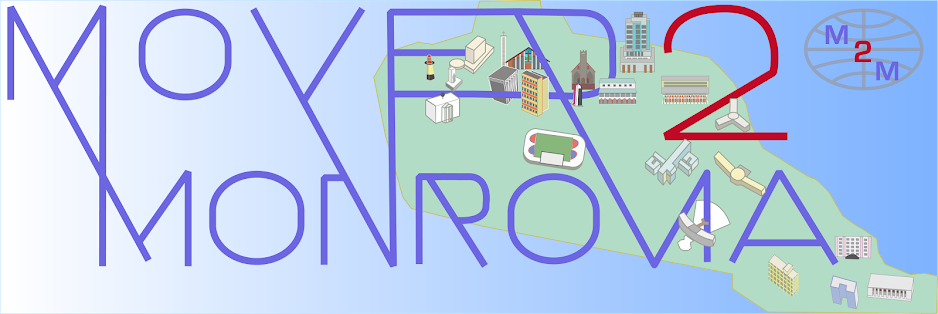Amidst the paranoia and panic, and my own preoccupations, I thought it'd be timely to post the below book excerpt, which has been sitting in the Drafts folder of this blog for literally years. It's beautiful, evocative description is the best anecdote to the hysteria around the place of origin of the Ebola virus. I hope you'll enjoy, and in the meantime I am getting myself situated and I'll be back to more regularly postings shortly.

©Google Earth.
High up in the wooded flank of the Guinea Highlands, a land of icy streams and alpine pastures, rises the stripling Niger, and its affluents, the Dion, the Sankarani and the Milo. Southward, beyond the rocky watershed, the mountain streams have bored their way down the cliffs and are lost in the vast stifling rainforest that blocks off the Highlands from the Gulf of Guinea. But on this northern flank, each river has carved out a delightful valley of its own, and the most delightful of all is the Milo Valley, an African garden of Eden.It was here, in the district of Konya, that the kola trade had flourished since the Middle Ages, providing its own bonanza. The kola nut was grown in the clearings of the forest, marketed in the valley and then carried laboriously across the wilderness for hundreds of miles to the mud villages and mud cities of the Sudan and beyond. The nut, one of the few stimulants allowed by Islam, was served as a luxury throughout Islamic Africa, and the Middle East. To organize this demanding trade came the Dyula, Muslim immigrants from the coast. The Dyula metropolis was Kankan, a teeming village of mud huts on the banks of the river Milo.The lines of trade pushed out and became more sophisticated. The arterial trade routes designed for the delicate and perishable kola nut-- fair markets, dry storehouses, trustworthy guards, able porters -- could also supply delicate girl slaves from the forests. In return back came ingots of salt from the Sahara and the luxuries of North Africa that the caravans had brought from still further away: fine cloth from Morocco, pottery from Tunis, horses from Arabia.
Sometimes, a passage in a book can, in a few sentences, transmit the essence of an entire world. Thomas Pakenham's ‘vast, scholarly and delightful’* 1991 epic, The Scramble for Africa details many of the European campaigns, and the figures who led them, into the interior of the continent for the sake of crown and glory. The above passage, conjuring a tropical Switzerland is itself so intriguing and magical, and in Pakenham's history, sets the scene for the French campaigns from both the coast and the desert to source the Niger River. The book as a whole is a vast, essential chronicle how the global slave trade, stretching its wicked tentacles deep into the the remotest redoubts of the region—increasing their vulnerability just as the European armies penetrated further into indigenous domains.Today, the heart of the Guinea Highlands is nominally protected by a National Park designation: The deep verdancy at the center of the above in the Google Earth image is the Parc National Haut-Niger. Three symmetrical clouds float over its center. At right, a slightly larger bit of cloud hovers just to the west of a white-grey mass that is the city of Kankan. The Niger, quickly widening as it enters southwesternmost Mali, can be seen at upper right. West African Manatees have been scientifically verified as far upriver as this border region; the Parc's population, thought to be several thousand, have reported dugong sightings deep in the park's interior, thousands of miles from the delta, and the Gulf of Guinea.

No comments:
Post a Comment